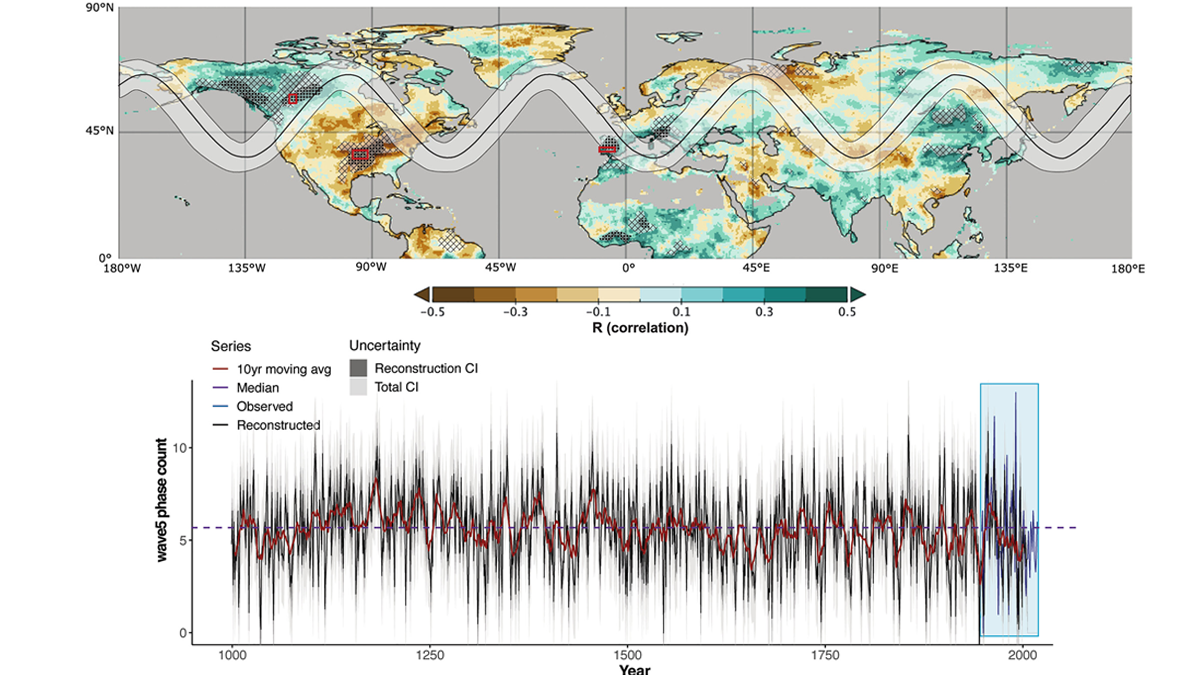Editors’ Highlights are summaries of recent papers by AGU’s journal editors.
Source: AGU Advances
The degree to which global warming will affect atmospheric dynamics and, therefore, extreme weather is still uncertain. Broadman et al. [2025] find a clever way to reconstruct the history of one dynamical pattern that occurs when the jet stream forms five peaks and troughs around the Northern Hemisphere (referred to as a wave5 pattern). When this pattern occurs and persists during May-June-July there is a higher likelihood of co-occurring compound climate events — for example combined heat and drought in the southeastern United States, China, and southern Europe, but wetter than normal in Northwest Canada and Spain.
The authors combine multiple lines of evidence, tree ring records, climate reanalyses and models, to reconstruct variations in the strength of the early summer wave5 pattern and extend them over the past millennium. They find decadal variations but no significant trends in the occurrence of wave5 related climate extremes. However, a demonstrated link between La Niña conditions the preceding winter could potentially help in predicting the potential in some regions for extreme weather the following summer.
Citation: Broadman, E., Kornhuber, K., Dorado-Liñán, I., Xu, G., & Trouet, V. (2025). A millennium of ENSO influence on jet stream driven summer climate extremes. AGU Advances, 6, e2024AV001621. https://doi.org/10.1029/2024AV001621
—Susan Trumbore, Editor, AGU Advances

